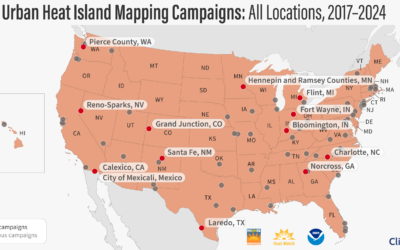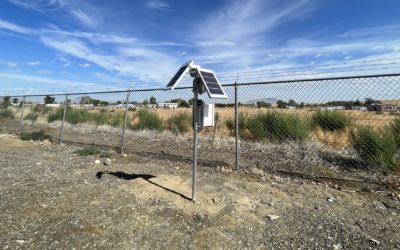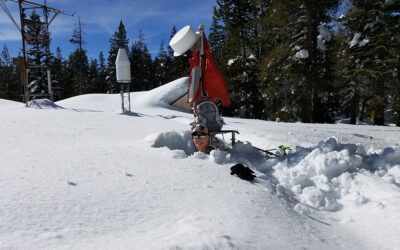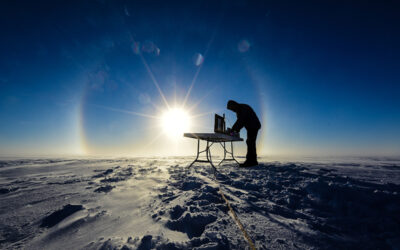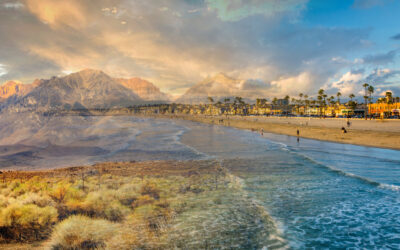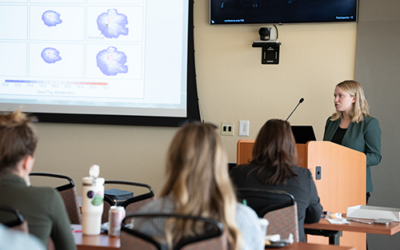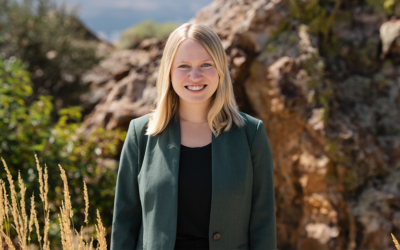Several municipal, county, and Tribal governments and community groups based in the Reno-Sparks area are teaming up to map the hottest parts of Reno, Sparks, and adjacent portions of Washoe County.
DRI Researchers Partner with NDEP to Prepare Rural Nevada Communities for a Smokier Future
In 2021, DRI researchers partnered with the Nevada Division of Environmental Protection (NDEP) to address the gap in air quality monitoring. Led by Kristin VanderMolen, Ph.D., assistant research professor of atmospheric science, a new study details how the research team designed custom air quality sensors and information materials for rural Nevada counties.
A New Tool Can Help Protect California and Nevada Communities from Floods While Preserving Their Water Supply
DRI’s Anne Heggli is partnering with the National Weather Service to understand flood risk from rain-on-snow storms in real-time, protecting communities and enabling water conservation throughout Nevada and California.
DRI’s Hans Moosmuller on Antarctic Expedition to Investigate the Impacts of Pollution Near the South Pole
Hans Moosmuller, Ph.D., joins two Chilean scientists from the Center for Environmental Technologies (CETAM) of the Universidad Tecnica Federico Santa Maria on an expedition to Antarctica’s Unión Glacier, located just a thousand kilometers from the South Pole.
Can Scientific Ingenuity Turn the Clock Back on Climate Change?
An interview with atmospheric scientist David Mitchell, Ph.D., who first proposed research into the climate intervention research of cirrus cloud-thinning.
3000 years of carbon monoxide records show positive impact of global intervention in the 1980s
An international team of scientists have assembled the first complete record of carbon monoxide concentrations in the southern hemisphere, based on measurements of air.
Meet DRI Atmospheric Modeler, John Mejia
John Mejia, Ph.D., is an associate research professor of Atmospheric Modeling at DRI. He was recently awarded a Mid-Career Advancement Award from the National Science Foundation (NSF) to support his research on climate change impacts to urban communities, including urban heat islands and air pollution.
DRI’s CNAP Project Selected as Regional Model for Building National Climate Adaptation
DRI is leading the way in building regional climate resiliency through the California-Nevada Adaptation Program, which will prepare communities for local-level action to address climate hazards including extreme heat and wildfire smoke, water scarcity, and coastal flooding.
Remembering Peter Wagner
The Peter Wagner Memorial Endowment was established in 1981 by Sue Wagner, his wife and former longtime Nevada legislator and Lt. Governor, family, and friends. We thank Sue Wagner for establishing this endowment in Peter’s memory and their continued support.
DRI Recognizes Andrea Gordon as the 2023 Peter B. Wagner Memorial Award-Winner for Women in Atmospheric Sciences
DRI is pleased to announce that the 25th annual Peter B. Wagner Memorial Award for Women in Atmospheric Sciences has been awarded to Andrea Gordon of the University of Oklahoma. An award ceremony commemorating her achievement was held at the DRI campus in Reno on Sep. 21, 2023.
